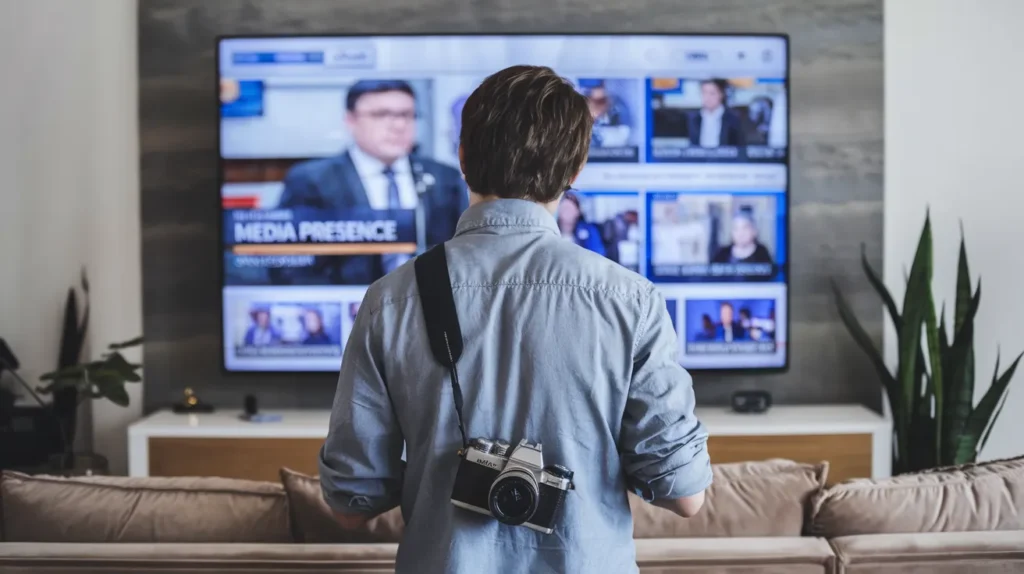
In today's world, modern media mythification hinges on three key insights. First, social media drives rapid information spread, often distorting reality. This creates echo chambers that legitimize certain narratives. Second, celebrity narratives shape public perceptions, making their stories resonate more than alternative views. Finally, visual storytelling captivates you emotionally, simplifying complex ideas into memorable content. Each of these elements fuels the creation and acceptance of myths. By understanding how they operate, you can better navigate the media landscape. There's so much more to uncover about these dynamics and their implications.
Role of Social Media
In today's digital landscape, social media acts as a powerful catalyst for myth-making. You might scroll through your feeds and notice how quickly stories morph into accepted truths. Platforms like Twitter, Instagram, and TikTok allow anyone to share content, which can lead to the rapid spread of misinformation. You've probably seen viral posts that spark debate or ignite controversy, often distorting reality in the process.
As you engage with these platforms, you contribute to the amplification of certain narratives. Every like, share, or comment boosts visibility, creating a feedback loop where myths gain legitimacy. You might find that the more sensational or emotional a post is, the more likely it's to go viral, regardless of the truth behind it.
Moreover, social media's design encourages echo chambers, where you're exposed mainly to viewpoints that reinforce your beliefs. This can make it harder to discern fact from fiction. The algorithms are tailored to keep you engaged, often prioritizing sensationalized content over balanced information.
As you navigate this space, it's essential to approach what you see with a critical eye, questioning the sources and motivations behind the narratives you encounter.
Influence of Celebrity Narratives
Celebrities wield significant influence over public perception, often shaping narratives that can quickly become accepted as truth. You might notice how a celebrity's endorsement can elevate a brand or a cause, making it feel more credible and desirable. When a well-known figure shares their personal struggles or beliefs, it resonates with you and many others, creating a shared narrative that can overshadow alternative viewpoints.
Consider how narratives surrounding health, beauty, and lifestyle are heavily influenced by celebrities. You often see them promoting diets or beauty products, and their influence may lead you to believe these choices are the ideal path. When you see a celebrity flaunting a certain lifestyle, it can make you question your own choices and aspirations, pushing you toward conformity.
Moreover, the stories celebrities tell about themselves—whether through interviews or social media—tend to simplify complex issues. These simplified narratives can lead to misunderstandings or unrealistic expectations about life, relationships, and success.
As you consume this content, it's crucial to remain critical and aware of how these narratives shape not just your perception but society as a whole.
Impact of Visual Storytelling
Visual storytelling captivates you by combining imagery and narrative in a way that words alone often can't achieve. This powerful medium shapes your understanding of complex ideas and emotions, bringing them to life in a visually compelling manner.
You're drawn to the colors, textures, and movements that evoke feelings, making information memorable and engaging. When you watch a film or scroll through social media, the visuals create a connection that words might fail to establish. You relate to characters, empathize with their struggles, and immerse yourself in their journeys. This emotional resonance influences your perceptions and beliefs, often leading to the formation of myths.
Moreover, visual storytelling often simplifies intricate narratives, making them easily digestible. You can absorb a story within seconds, whether it's a documentary, advertisement, or animation. This immediacy can sway your opinions and shape cultural narratives, reinforcing or challenging existing myths.
As you engage with visual media, you become an active participant in the storytelling process. You're not just a passive observer; you interpret, reflect, and share these stories, contributing to the broader landscape of modern media mythification.
Conclusion
In today's world, you can see how social media shapes our perceptions and spreads myths at lightning speed. Celebrity narratives often distort reality, making it hard to separate fact from fiction. Plus, the power of visual storytelling can amplify these myths, making them more relatable and shareable. By staying aware of these influences, you can better navigate the modern media landscape and develop a more critical perspective on the information you consume.